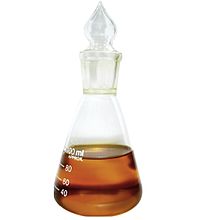
Photo from wikipedia
Abstract We have developed a mediatorless glucose biofuel cell based on hybrid nanoflowers incorporating enzymes including glucose oxidase (GOx), laccase, or catalase with copper phosphate, which were further mixed and… Click to show full abstract
Abstract We have developed a mediatorless glucose biofuel cell based on hybrid nanoflowers incorporating enzymes including glucose oxidase (GOx), laccase, or catalase with copper phosphate, which were further mixed and compressed with conductive multi-walled carbon nanotube (CNT). The nanoflowers were simply synthesized within 5 min at room temperature using sonication method but yielded greatly improved stability as well as highly retained activity by the proper incorporation of enzyme molecules inside the flower-like structure. With glucose as biofuel, GOx and laccase nanoflowers were applied to form enzyme anode and cathode, respectively, and catalase nanoflowers were additionally employed to catalyze the decomposition of hydrogen peroxide, which may be deleterious for GOx, into oxygen and water. Using the enzyme nanoflowers-based biofuel cell system without any involved mediator, a high power density up to 200 μW cm −2 were obtained, which was approximately 80% to that from the biofuel cell system prepared with the corresponding free enzymes. Importantly, the enzyme nanoflowers-based biofuel cell maintained their initial power density over 90% during storage for two months at 4 °C, while most of the glucose biofuel cells in the literature present meaningful stability only in the range of one or two weeks. Based on this result, we expect that this simple but efficient strategy to prepare highly stable glucose biofuel cell using the rapidly-synthesized enzyme-inorganic hybrid nanoflowers can be readily extended to diverse applications in medical and environmental chemistry.
Journal Title: Applied Surface Science
Year Published: 2018
Link to full text (if available)
Share on Social Media: Sign Up to like & get
recommendations!